Welcome to our blog post on the intriguing relationship between hummingbirds and hydrangeas! In this article, we’ll explore whether these delightful birds are attracted to hydrangea blooms. Additionally, we will provide valuable tips for growing beautiful hydrangeas in your garden while also highlighting several other exquisite flowers that capture the hearts of these enchanting creatures. Let’s dive in and unravel nature’s captivating secrets together!
What Do Hummingbirds Eat?
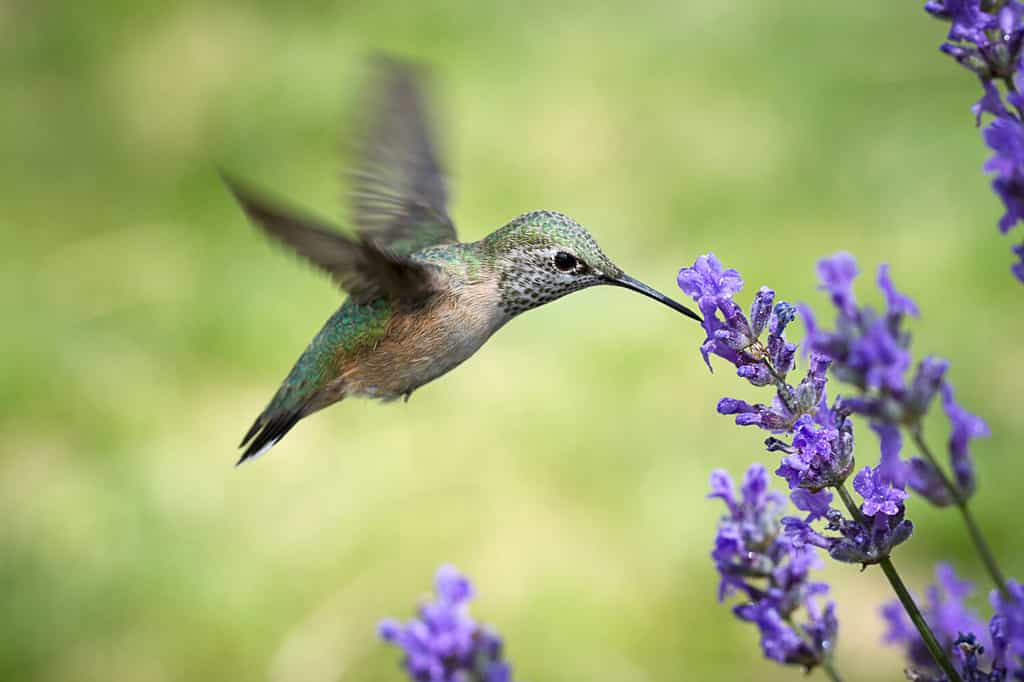
These tiny birds eat nectar and insects. They sometimes eat tree sap.
©Gregory Johnston/Shutterstock.com
Hummingbirds primarily feed on nectar from flowers and also insects such as gnats, moths, and aphids. They are also attracted to sugar-water feeders and other sources of sugar. Hummingbirds typically eat around every 10-15 minutes and consume up to twice their body weight in nectar and insects each day. In addition to their diet, here are some fun facts about hummingbirds:
- Hummingbirds are the smallest birds in the world, with some species measuring just 2 inches long and weighing less than a penny.
- They are the only type of bird that can fly backward and hover in mid-air.
- Hummingbirds have the fastest metabolism of any animal.
- The hummingbird’s wings beat between 50 and 200 times per second.
- They are the only birds that can drink nectar in mid-air.
- Hummingbirds can live up to 12 years in the wild.
Do Hummingbirds Like Hydrangeas?
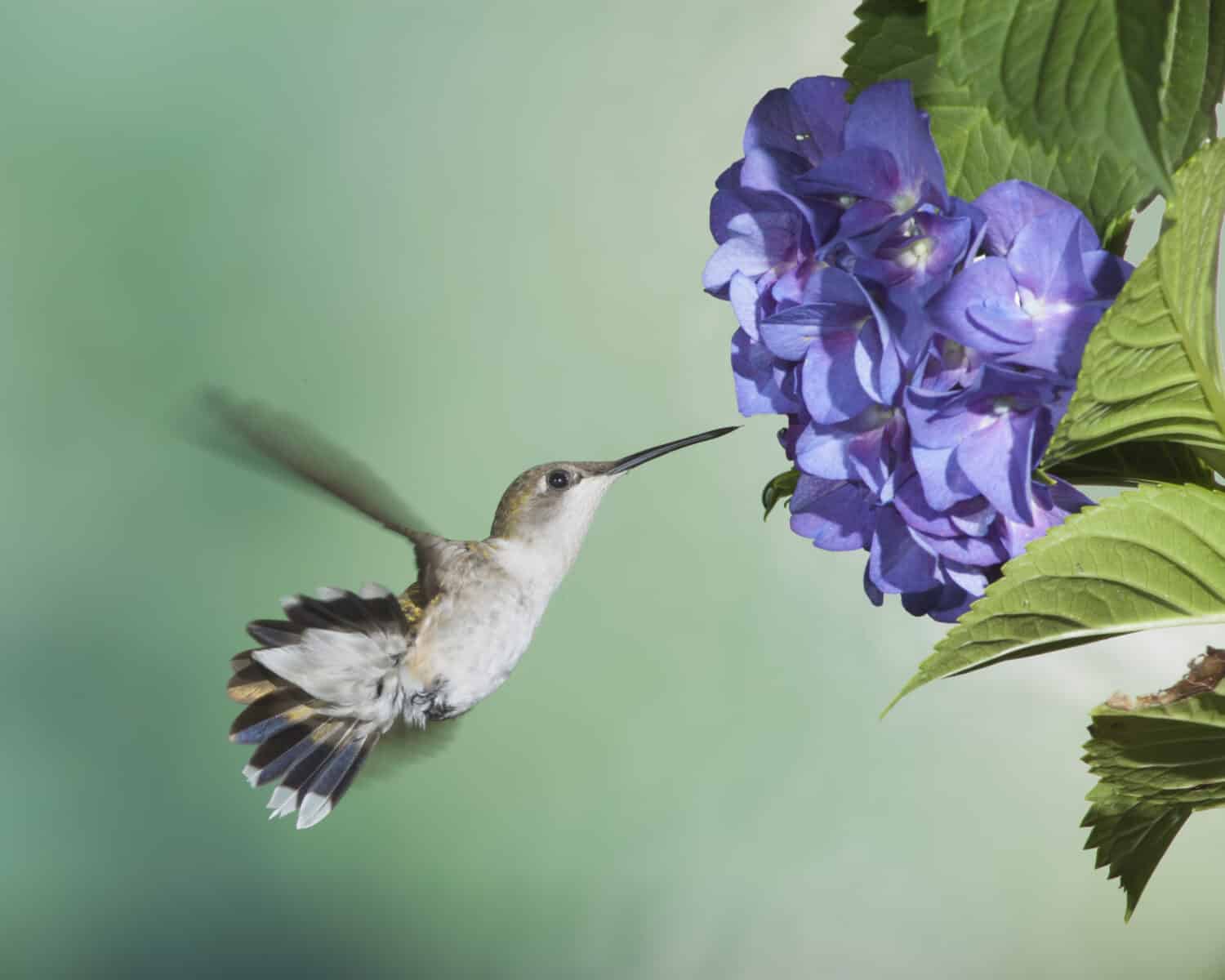
If you like hummingbirds, plant hydrangeas.
©R.C. Bennett/Shutterstock.com
Yes, hummingbirds like hydrangeas. Hummingbirds are drawn toward bright colors and sweet nectar, and hydrangeas have both of these qualities. As a result, they are often a popular choice for hummingbird enthusiasts, and many people report seeing hummingbirds flock to their hydrangeas.
When it comes to attracting hummingbirds, it is important to consider the color of the flowers. Hydrangeas come in a variety of colors, but the most popular for attracting hummingbirds are the deep blues, purples, and pinks. Additionally, the flowers of hydrangeas produce a large amount of nectar, which hummingbirds love.
A great way to attract hummingbirds to your yard is to plant nectar-rich flowers and provide a constant source of fresh water. Hummingbirds tend to like gently moving water. So bird baths with solar fountains or water that is flowing is best for them. Then they can drink and preen in the trickling stream.
Types of Hydrangeas
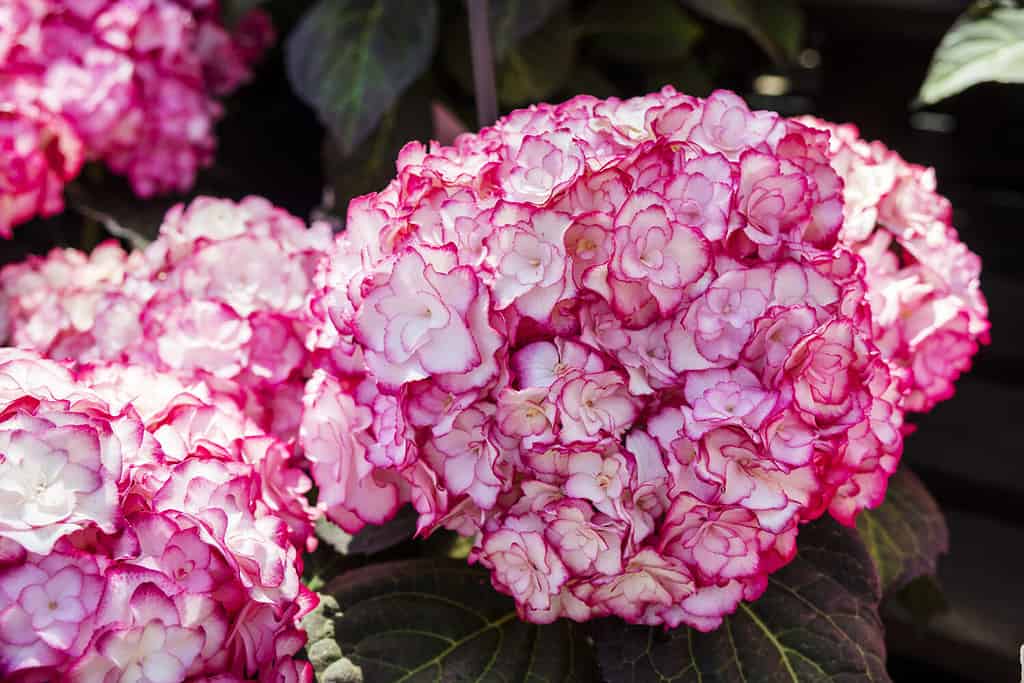
There are many different types of hydrangeas. Hummingbirds like the pink ones best.
©Debu55y/Shutterstock.com
Hydrangeas are a popular garden plant renowned for their large, round blooms and foliage. There are many different species of hydrangeas, which vary in size, color, and bloom time. Some of the most common types of hydrangeas include the mophead, oakleaf, lace cap, and panicled.
Mophead hydrangeas are the most popular type of hydrangea, characterized by their large, round blooms that can be almost as big as a dinner plate in size. The flowers are usually shades of pink, blue, purple, or white, with some varieties bicolored. The mophead hydrangea blooms in summer and can reach heights of up to ten feet.
Oakleaf hydrangeas are another popular variety characterized by their large, lobed, oak-shaped leaves. The flowers are small and white and bloom in late summer. People often use this type of hydrangea as a hedge or for screening, as it can reach heights of up to twelve feet.
Lacecap hydrangeas are a variety of hydrangea with a different flower form than the mophead and oakleaf types. The flowers are flat heads of small florets surrounded by larger florets, giving the appearance of a lacy cap. The blooms are usually pink or blue and bloom in summer. These hydrangeas are a smaller variety, usually growing to around four or five feet in height.
Finally, panicled hydrangeas are a type of hydrangea with long, cascading clusters of flowers. The flowers are usually white and bloom in summer. This type of hydrangea is a great choice for a small garden, as it usually only grows to around three or four feet in height.
How to Grow Hydrangeas
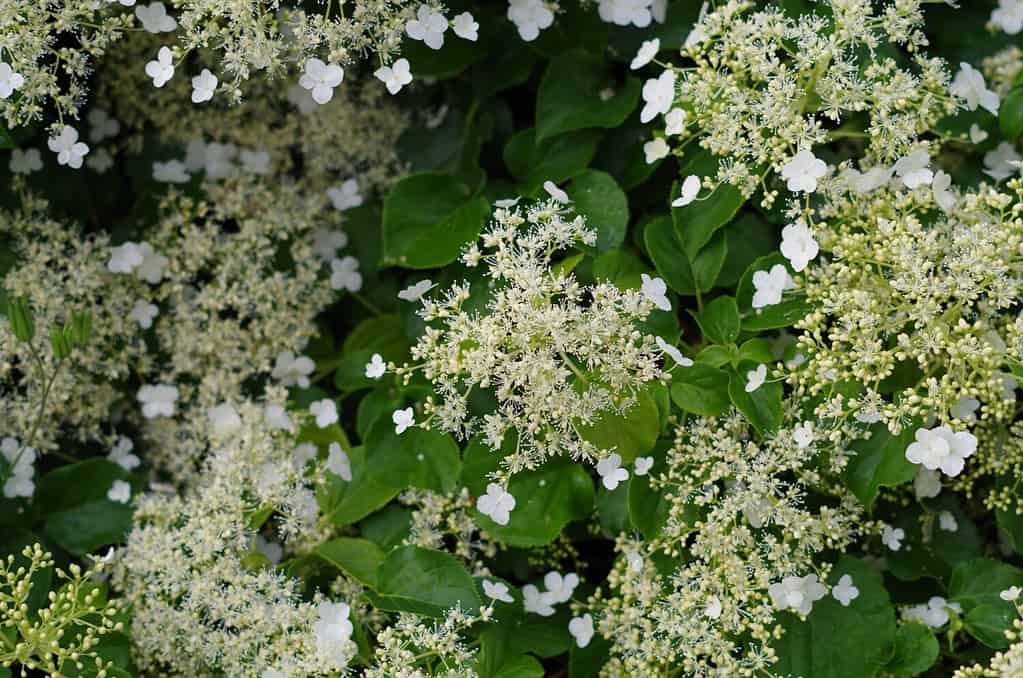
Don’t forget about the beautiful climbing hydrangea!
©shadesofquartz/Shutterstock.com
These eye-catching shrubs are easy to cultivate and grow successfully in many different types of soil. They come in a variety of colors, such as blue, pink, white, lavender, and rose. You can use these plants for group plantings, shrub borders, and even containers. Horticulture specialists produce new varieties all the time, so there is a wide selection to choose from. It is important to pay attention to the species so you know how to take care of it properly. Hummingbirds like hydrangeas, so it is a great idea to plant more than one variety. When you understand the needs of the hydrangea, the results will be even more amazing!
How and When to Plant a Hydrangea
Hydrangeas like morning sun and afternoon shade. This is particularly true for bigleaf hydrangeas. Some varieties are more tolerant of full sun. You will need to plant hydrangeas in soil that is rich in nutrients and drains well, adding compost or aged manure to soil that lacks fertility.
The ideal time for a human to plant a hydrangea is during autumn or spring. Do it after the last frost in the spring or before the first frost in the fall. This gives the shrub enough time to create a strong root system before the summer heat or winter cold sets in, making autumn and spring the optimal times for planting. Hummingbirds like hydrangeas, so if you plant them in the fall, they will be in bloom when the hummingbirds arrive in the fall after their long migration.
To plant hydrangeas, create a hole that is as deep as the root ball and two or three times as wide. Place the base of the plant at the top of the hole, and then fill it up halfway with soil. Give the soil a generous watering, and then fill the rest of the hole with the soil. For spacing, hydrangeas should be anywhere from three to 10 feet apart, depending on the type. Be sure to trim off any dead or rotting root parts and loosen up the roots if they are bound tightly together.
How to Water a Hydrangea
To ensure successful growth, water hydrangeas consistently for the first two years after planting and during periods of drought. Aim for one inch of water per week throughout the growing season, preferably in the morning. Bigleaf and smooth hydrangeas need more H2O than other varieties. Their leaves will wilt, and flowering will be hindered if the soil is too dry. Add organic mulch around the plant to help retain moisture, add nutrients, and improve soil texture.
How to Fertilize a Hydrangea
To determine if your hydrangeas need fertilizer, it is best to use a soil test. Depending on the variety, different application timing should be applied. Bigleaf hydrangeas should be fertilized in March, May, and June, while oakleaf and panicle hydrangeas should be fertilized in April and June. Smooth hydrangea plants only need to be fertilized once in late winter.
5 Other Flowers That Attract Hummingbirds
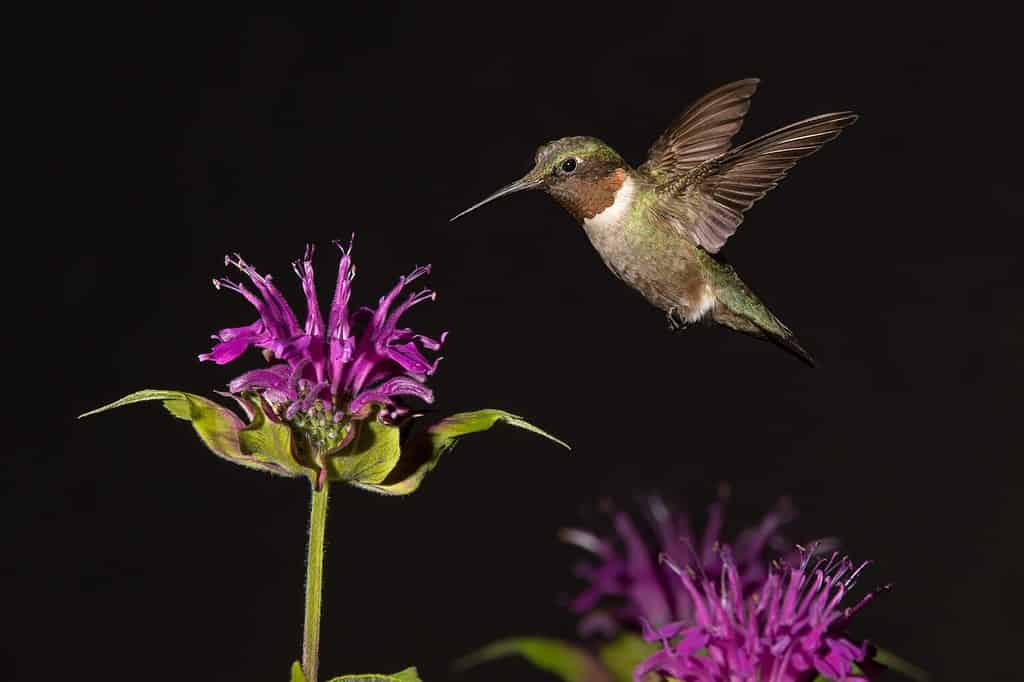
Bee balm is a special favorite of hummingbirds.
©Matt Cuda/Shutterstock.com
Hummingbirds like hydrangeas, but they are a big fan of many nectar-rich flowers. They are especially fond of flowers with trumpet-shaped blooms. They like the colors of orange, red, and pink best of all.
- Lupine: This tall, spiky flower has blooms that range from white to purple, and the flower’s long, tubular shape makes it a favorite of hummingbirds.
- Pentas: These bright star-shaped flowers come in shades of pink, magenta, and white, and the nectar they provide is a favorite of hummingbirds.
- Foxglove: Growing up to 6 feet tall, foxglove is a stately flower that comes in shades of pink, purple, and white. Its trumpet shape makes it the perfect flower for hummingbirds to sip from.
- Bee Balm: This fragrant flower’s tubular shape and bright red, pink, or white blooms make it a favorite of hummingbirds.
- Larkspur: This tall, spiky flower comes in shades of pink, blue, and purple, and its long, slender shape makes it easy for hummingbirds to access the nectar.
Thank you for reading! Have some feedback for us? Contact the AZ Animals editorial team.







